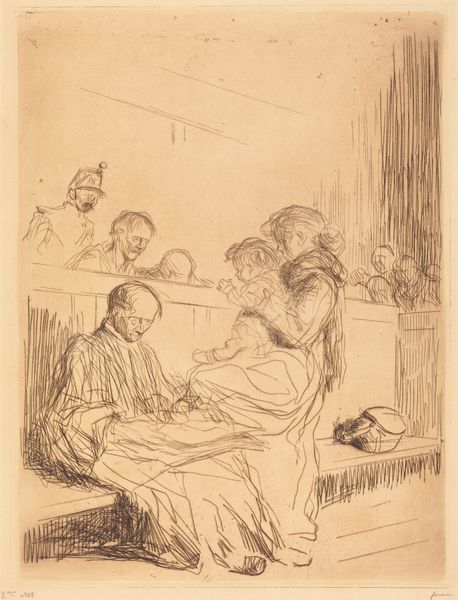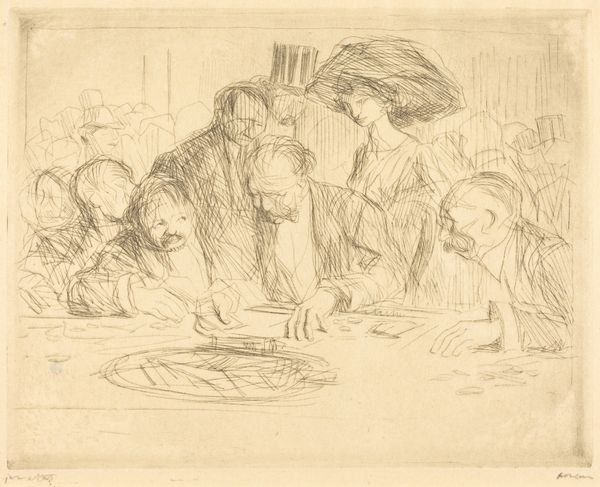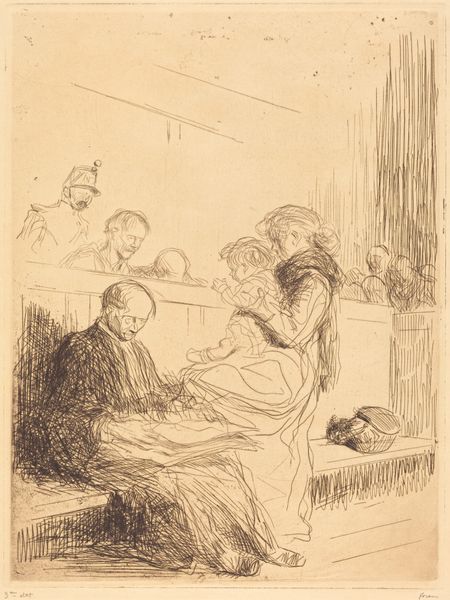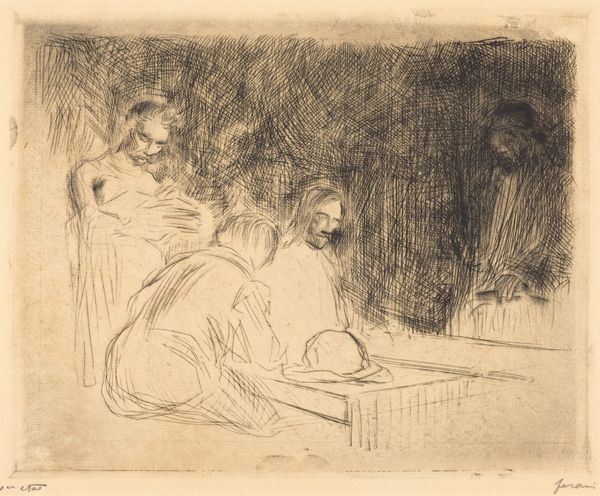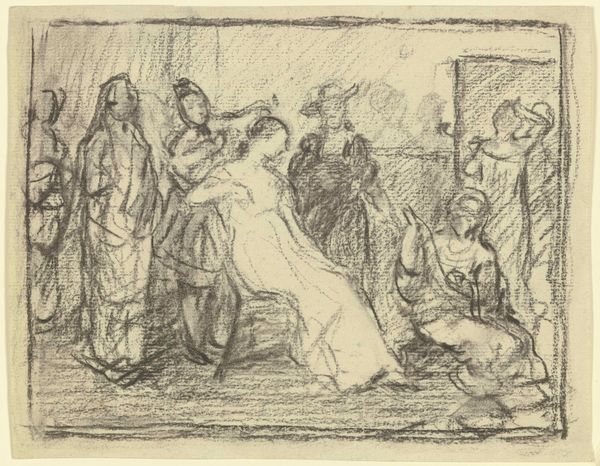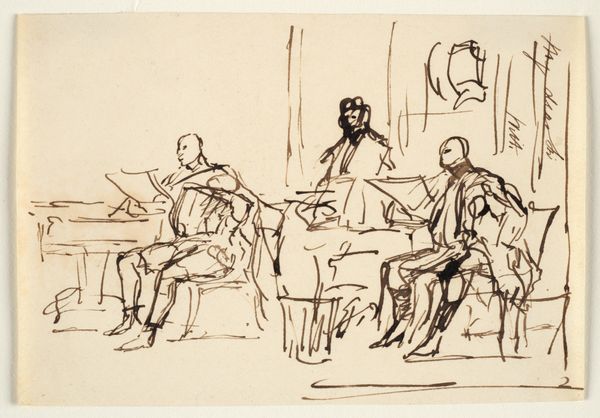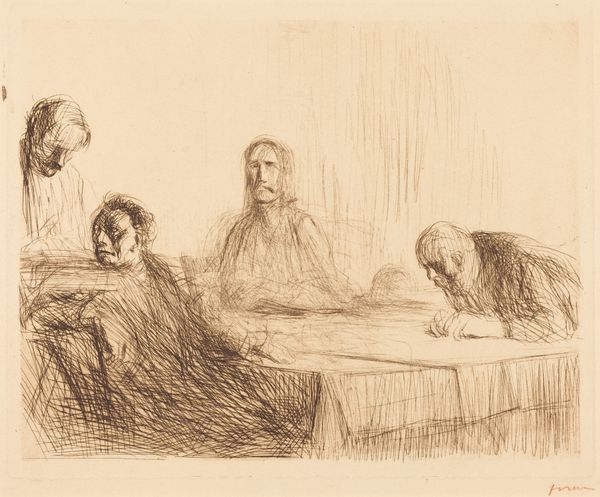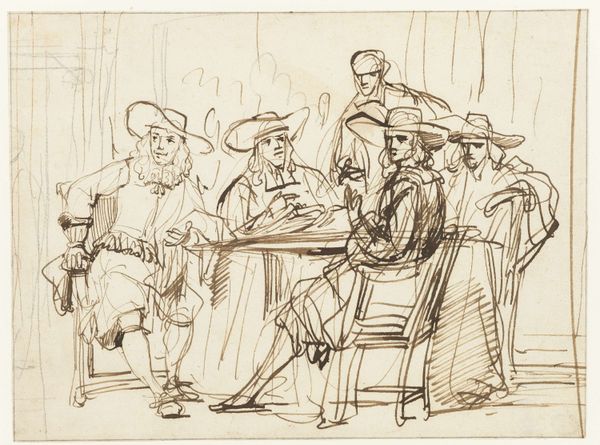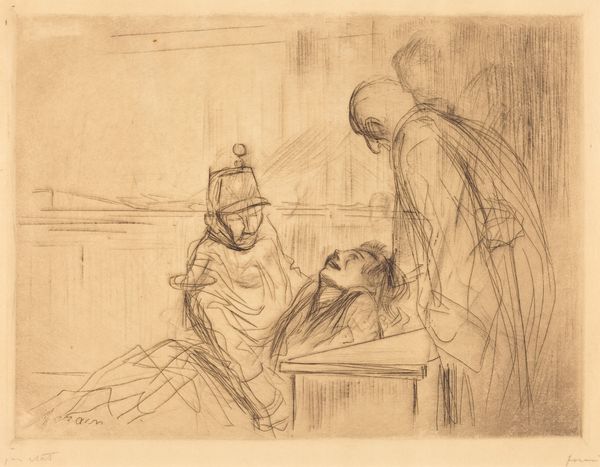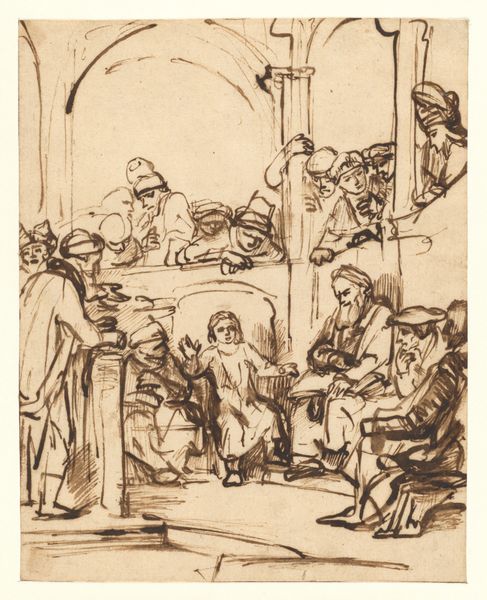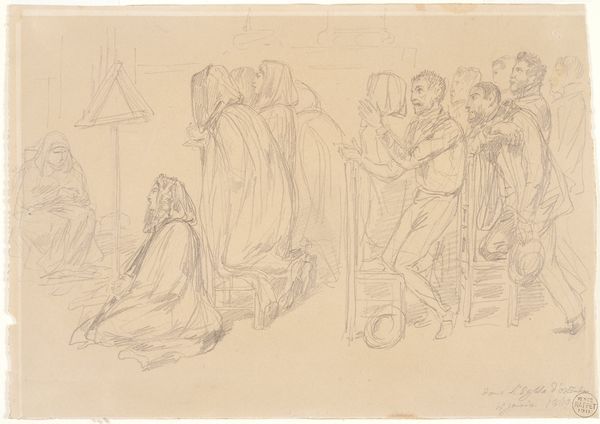
Copyright: Public Domain
Curator: Before us, we have Max Liebermann's "Studie zur Judengasse Amsterdam" from 1908, housed at the Städel Museum. It's rendered in chalk and charcoal. Editor: My immediate impression is of fleeting activity, a momentary glimpse into a bustling market. The figures are sketched so rapidly, with almost frenetic energy. Curator: Indeed, Liebermann masterfully uses line to evoke the scene’s dynamic essence. Note the confident strokes; they're economical, almost abstract in their construction, yet they coalesce to define form and space effectively. The play of light and shadow, achieved through varying pressures of the charcoal, adds depth and dimension, wouldn't you agree? Editor: Yes, I agree but I am more intrigued by the visible evidence of process here. The artist's hand is palpable in every mark. One sees the labor, the direct engagement with materials that makes it more intimate. The use of charcoal and chalk also brings this question: were these materials that were widely available, thus allowing him to quickly and effectively capture these quick outdoor street sketches? Curator: Undoubtedly. That the material reality plays an active part is significant here; also Liebermann's careful structuring gives an illusion of reality. Observe how he uses negative space. How crucial it is in shaping our perception and understanding of the depicted forms? It creates rhythm within the composition. Editor: True, the composition directs the gaze to and from the various clusters of figures around a presumed marketplace or food preparation area. But the historical setting and economic circumstances should matter too. Curator: Fair, and his art holds an intimate position that gives us insight into these overlooked Jewish Quarters. Editor: The artist, too, had to negotiate these ethnic tensions as his art practice unfolded. And Liebermann documents all this, if unconsciously, in his choices of medium, locations, and the quick and furtive gestures through his method of making art. Curator: A compelling perspective. I am once again struck by his sophisticated formal command of tonal variations and line work to bring life to an ordinary city space. Editor: Precisely. This approach sheds a crucial light on this early urban landscape study and on its creation, too. It speaks of its specificities, limitations, and artistic intentions.
Comments
No comments
Be the first to comment and join the conversation on the ultimate creative platform.
